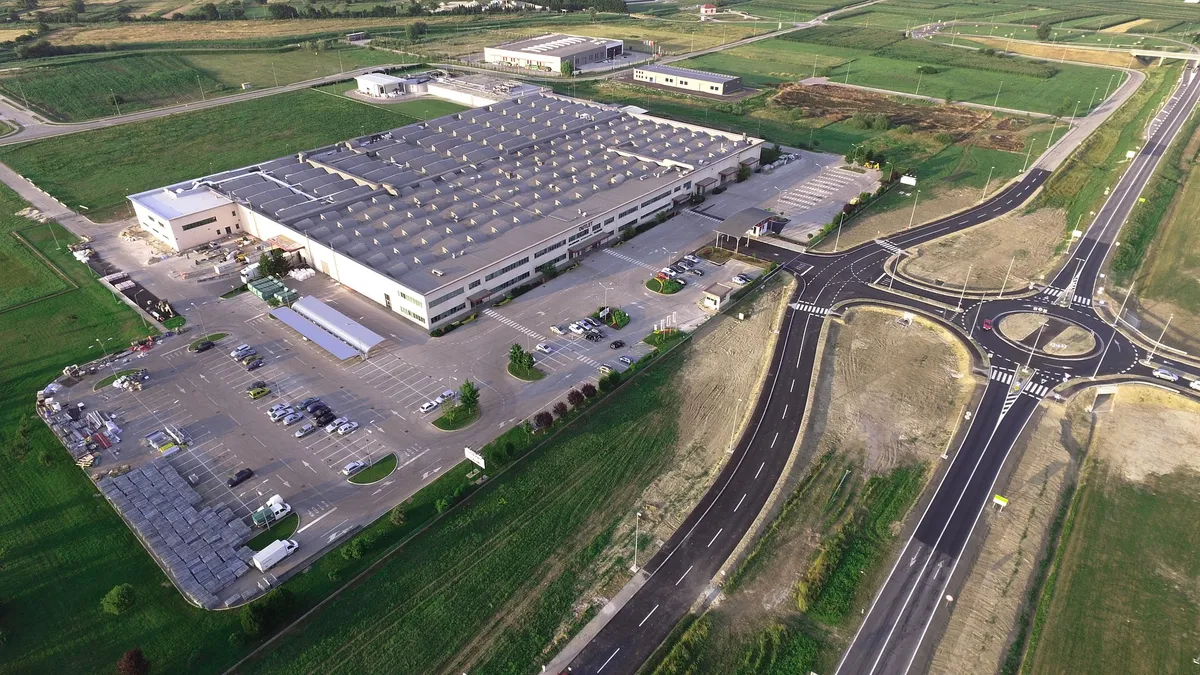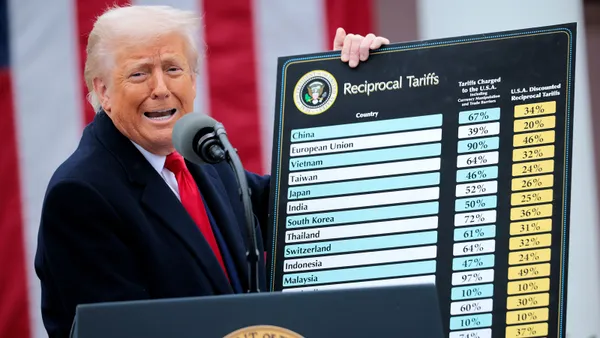Dive Brief:
- Amazon and UPS have much in common, including parts of their growth strategy as they consider how best to balance costs and revenue during an e-commerce boom. The two companies reported their Q1 results this week, once again recording extremely high capital investments that weighed on their bottom line.
- Amazon's CFO Brian Olsavsky told investors much of the 51% year-over-year growth in capital expenditures came from investing in fulfillment centers, with 23 new warehouses being added in the second half of last year, carrying costs over to the first quarter.
- UPS, meanwhile, reported a $39 million (2.1%) year-over-year decrease in operating profit, drawing concern from investors of rising costs. However, UPS CFO Richard Peretz said the company faced various one-time operating costs, including a $20 million expense from a warehouse fire plus weather effects, and $35 million from five million square feet in new warehouses combined with expanding operations for Saturday delivery.
Dive Insight:
"There has been a fundamental shift in how our market has been created for small package," UPS CFO Richard Peretz said to investors Thursday. "Our market is expanding, but the way people are receiving merchandise is different. And we're preparing this company and our network to make adjustments for that."
The two companies' financials may reflect lower operating margins than is often desired, but the new investments are very clearly tied to creating a logistics infrastructure capable of getting parcels to consumer where and how they want it. Whether that is delivery to store, office or home, both Amazon and UPS are looking for ways to optimize the service and appear to have come to the same conclusion: more warehouses, faster service and improved technology are all necessary.
For Amazon this means more sortation centers, robotics and airplanes to handle the speed customers demand.
"I think the biggest areas of efficiency right now are in our Amazon Robotics areas," Amazon CFO Brian Olsavsky told investors Thursday. "It's just amazing to see the strides that Amazon Robotics has taken and the efficiency we're getting in our warehouse as a result."
"The other efficiencies that we're seeing are network efficiencies," Olsavsky added, noting improved sortation centers have allowed the company to extend 2-day shipping cutoff times from 3 PM to midnight. However, "the fulfillment centers I'll also say with the robotics technology tend to be more capital intensive than prior versions of warehouses."
UPS seems to agree on this strategy, as two of the five million square feet in new warehouse investment are for automated fulfillment centers in Salt Lake City and Dallas. In addition, the company invested heavily in city logistics with its Saturday delivery network expansion, opening 40 new buildings last quarter with 200 more slated for opening later this year.
The reason? Many of the company's brick-and-mortar customers are looking to compete with larger e-commerce companies and "working with [UPS] on being able to hit the customer the next day or in two days," UPS CEO David Abney said Thursday. "They could never build the warehousing in order to do that."
"So that has been our focus over the last few months," Abney added. "How [can we] use our available facilities and give these midsized customers very similar coverage to what larger companies would have, and that would be based on our small package network, but it's based on [the] distribution and warehousing network."
It's more than just having a large warehouse footprint, however. As both companies allude, it also takes network efficiencies, or being able to move product between warehouses, fulfillment centers, delivery vehicles and businesses or residences within that same 2-day time frame.
In addition to sorting technology, another key piece of the puzzle is the vehicles to deliver the product quickly - which includes a growing air cargo presence. Amazon said it has expanded its fleet to 18 planes with options to lease up to 40 more; while UPS now owns 238 planes, leases 301 more and has 16 more on order with options for an additional 14.
From the launch of its logistics venture, Amazon has expressed confidence its investments in fulfillment capacity would eventually yield a high return. In the most recent earnings call, UPS executives appeared to echo that philosophy. "We're not investing in the network for the next quarter or the next year," Abney said. "It's really about generationally and about the long term."
















